Chemistry 1.02 Ahmed - Lab Safety
1/73
There's no tags or description
Looks like no tags are added yet.
Name | Mastery | Learn | Test | Matching | Spaced |
|---|
No study sessions yet.
74 Terms
Accidents do not just happen, they…
are caused
Three things that lead to accidents
carelessness, haste, and disregard for rules and practices
safety practices protect…
you and everyone around you
Year OSHA was passed
1971
OSHA
Occupational Safety and Health Act
Purpose of OSHA
reduce workplace accidents (including in labs)
kinds of hazards in a lab
biological, physical, radioactive
Safety regulations are a matter of…
local, state, and federal law
Before beginning a lab…
5. Never eat, drink, or chew gum during lab.
6. Remove unnecessary papers, etc. from the lab table.
7. Place purses, bags & backpacks out of the aisles.
Familiarize yourself with lab procedures
Always carefully review and abide by the…
oral/written instructions
You are never permitted to work…
alone in the lab/do unauthorized experiments
Before a lab, notify the teacher of
allergies, asthma, or other pertinent medical history
Why may you not eat/drink/chew gum
distracting
could fall into your experiment and taint results/cause a mess
How should the table be in the beginning of an experiment
cleared (no papers, etc.)
Bag placement
out of aisles
Required safety gear
lab coats and goggles
How to deal with:
hair
footwear
tops
jewelry
eyewear
long hair must be tied back
footwear should be close-toed
tops should have tight fitting sleeves
jewelry/lanyards must not dangle
NO contacts, glasses should be covered by goggles
Take the lab…
seriously
Process of testing odors
direct the fumes using a wafting motion to your nose
Experiments with poisonous vapors to be conducted in…
the fume hood
Fume hood function
It blows all the air out the fume hood
What to do after a lab?
Clean the table and leave it clear as per teacher instructions
Which specific lab areas should be cleaned
lab table, electronic balance, chemical bottles
What do you do with lab aprons/coats and goggles
return to OG location
After finishing handling chemicals, you should…
wash your hands with soap and water!
To ensure you’re familiar with how to handle a chemical properly what should you check?
Chemical labels and NFPA diamonds
How much chemical should you retrieve in an experiment
only as much as you need
What to do with leftover chemicals?
do not return to stock
What to do if you touch chemicals with your bare hands?
wash them immediately
AAA rule
Always Add Acid to Water
Carry glassware…
away from your body
How to prepare glass for holed glass stopper
lubricate it
How to handle hot glassware?
Tongs (ie, beaker tongs for beakers)
HOT GLASS LOOKS LIKE… Allow…
cool glass. time to cool down
Broken glass
notify teacher! sweep up with dustpan and brush (use gloves) and dispose of in broken glass box
Electrical cords: 3 things
32. Heat a substance only when necessary, and for a short period of time.
33. Ignite a Bunsen burner only when necessary.
34. Pay attention to lit Bunsen burner flames.
35. Keep your body, clothing, chemicals, and combustible materials away from lit Bunsen
burner flames.
out of the way, untangled, on the table
When heating a test tube,
point mouth away from others
When containers are being heated,
keep face clear
How long should you heat substances? When?
For short periods of time, only when necessary
When should you light a Bunsen burner?
only when necessary
Avoid what around lit Bunsen burners
bringing clothing, body parts, or combustible materials to flame
Steps after a chemical spill occurs
remain calm
notify teacher
consult the SDS
Clean and bandage cuts (if any)
Steps if chemical gets in the eyes
Have a friend lead you to the eyewash
Run it for a minute to clear debris
Hold eye open with thumb and forefinger
Rinse eye from the outside to inside corners for 15 mins
Roll eyes around for full coverage
Contact medical professionals
What kind of fire extinguisher is used?
Class ABC
____, _____ fires involving ____,____ , ____= fire extinguisher
open, contained; combustibles, oil, electricity
Pressure gauge
Arrow should clearly rest in green
Steps to operating fire extinguisher
break seal/pull the pin
Walk 10 ft away
Aim the hose at the base of the fire
Squeeze the handle to release agent
Sweep the nozzle across the span of the fire
After 10 seconds, evacuate
Contact medical professionals
What extinguishes burning things
Fire extinguisher
What extinguishes burning people
fire blanket
Steps for fire blanket usage
Turn off (if possible)/move away from flame
Unfold blanket
Shield yourself or other person and approach
Wrap tightly to smother fire
Seek medical attention ASAP
If no fire blanket is readily available,
stop, drop, and roll
When to use safety shower
After chemical spill onto skin
Steps for the safety shower
go to safety shower
Remove contaminated clothing
Rinse for 15 minutes
contact medical professionals
What are some things SDSs address
Chemical properties, what to do in case of spill, first aid measures, how to handle, protective equipment required
Immediate-use chemical label
Your name, the date, chemical name, and chemical formula
Extended-use chemical label
Chemical name, formula, and hazard information
NFPA red
flammability
NFPA blue
health
NFPA yellow
chemical reactivity
NFPA white
special hazards
RED | Ranking | |
4 | ||
3 | ||
2 | ||
1 | ||
0 |
RED | Ranking |
4 | burns at 73° F |
3 | burns at 100° F |
2 | burns at 100-200° F |
1 | burns at 200° F |
0 | will not burn |
BLUE | |
4 | |
3 | |
2 | |
1 |
BLUE | Ranking |
4 | deadly |
3 | Extreme danger |
2 | Hazardous |
1 | Slightly hazardous |
YELLOW | Ranking |
4 | May detonate |
3 | Shock and heat may detonate |
2 | Violent chemical change |
1 | Unstable if heated |
0 | Stable |
YELLOW | Ranking |
4 | |
3 | |
2 | |
1 | |
0 |
WHITE | Meaning |
OX | Oxidizer |
ACID | Acid- corrosive |
ALK | Alkaline/base- corrosive |
COR | Corrosive |
w̶ | Water-reactive |
☢ | Radioactive |
WHITE | Meaning |
OX | |
ACID | |
ALK | |
COR | |
w̶ | |
☢ |
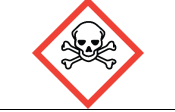
Acute toxicity
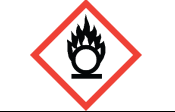
oxidizer
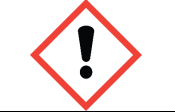
irritant
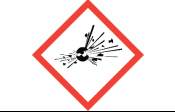
explosive
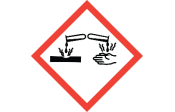
corrosive
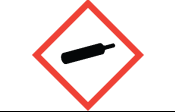
compressed air
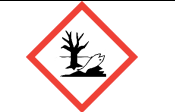
environmentally toxic
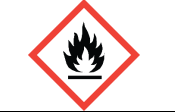
flammable
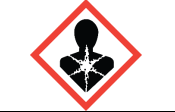
health hazard